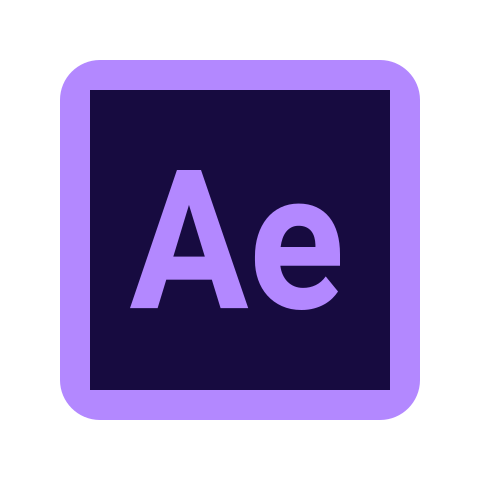
Adobe After Effects CS6 remains a pinnacle in the world of digital visual effects, motion graphics, and compositing. As a staple software for filmmakers, video editors, and graphic designers, its robust capabilities have made it a must-have tool in the creative industry. In this comprehensive guide, we will explore how to download Adobe After Effects for free on Mac, detailing its key features, system requirements, installation process, and some tips to Make the most of this powerful program.
Table of Contents
Why Choose Adobe After Effects for Free?

Adobe After Effects CS6 offers a range of sophisticated tools that allow users to create stunning visual effects and motion graphics. Its advanced features include:
- Global Performance Cache: This feature boosts productivity by optimizing and reusing frames between sessions.
- 3D Camera Tracker: Allows seamless integration of 3D elements with live-action footage.
- Ray-traced 3D Rendering Engine: Enables the creation of photorealistic 3D graphics and animation.
- Variable Mask Feathering: Provides more control over the edges of masks, allowing for smooth transitions.
- Integration with Adobe Creative Suite: Easy interoperability with other Adobe software such as Photoshop and Illustrator.
These features make Adobe After Effects CS6 an essential tool for creating professional-grade animations and effects.
System Requirements for Adobe After Effects for Free on Mac
Before you proceed with downloading Adobe After Effects for free, ensure that your Mac meets the following minimum system requirements:
- Operating System: macOS X v10.6.8 or v10.7
- Processor: Multicore Intel processor with 64-bit support
- RAM: 4 GB minimum (8 GB recommended)
- Hard Disk Space: 6 GB of available disk space for installation; additional free space required during installation
- Display: 1440×900 display with OpenGL 2.0-compatible graphics card
- Internet: Internet connection required for product activation, validation of subscriptions, and access to online services
Downloading Adobe After Effects for Free
While Adobe no longer officially provides Adobe After Effects CS6 for free, there are legitimate ways to access the software:
1. Adobe Creative Cloud Free Trial
Adobe offers a free trial of their Creative Cloud suite, which includes the latest version of After Effects. Although this isn’t the CS6 version, it provides a good opportunity to experience the software’s capabilities.
2. Educational Discounts
Students and educators can take advantage of significant discounts on Adobe products, including After Effects. Check with your institution to see if you qualify for any free or discounted software.
3. Licensed Software from Authorized Resellers
Occasionally, authorized resellers may have older versions of Adobe software available for purchase. This is a safer alternative than downloading from unauthorized sources, which could expose your computer to malware.
4. Archive and Old Software Repositories
Some websites archive old software versions, providing access to historical software versions like Adobe After Effects CS6. Ensure that you download from reputable sites to avoid security risks.
Installation Guide for Adobe After Effects CS6 on Mac

Once you have successfully downloaded Adobe After Effects for free, follow these steps to install it on your Mac:
- Download the Installer: Ensure that you have the complete installer file. It typically comes in a .dmg format for Mac.
- Mount the Disk Image: Double-click the .dmg file to mount the disk image on your desktop.
- Run the Installer: Open the mounted disk image and double-click the installer package to begin the installation process.
- Follow the Onscreen Instructions: The installer will walk you through the installation process.
- Enter Serial Number: If you have a valid serial number, enter it when prompted. If you’re using a trial version, skip this step..
- Complete the Installation: Once the installation is complete, launch Adobe After Effects CS6 from your Applications folder.
Tips for Getting the Most Out of Adobe After Effects for Free
Optimize Performance
To ensure smooth performance while using Adobe After Effects CS6, consider the following tips:
- Increase RAM: More RAM allows After Effects to handle larger projects more efficiently.
- Use SSD: Installing After Effects on an SSD can significantly reduce load times and improve overall performance.
- Adjust Preferences: Go to Preferences > Memory & Multiprocessing and allocate more memory to After Effects.
Learn Key Shortcuts
Mastering keyboard shortcuts may drastically accelerate your workflow. Some essential shortcuts include:
- Spacebar: Play/Stop Preview
- B: Set Beginning of Work Area
- N: Set End of Work Area
- Cmd+Z: Undo
Explore Online Resources
The Adobe community is vast and supportive. Utilize online tutorials, forums, and documentation to learn new techniques and troubleshoot issues.
Use Presets and Templates
Take advantage of the numerous presets and templates available online. These can help you achieve professional results quickly and efficiently.
Regularly Save Your Work
Adobe After Effects projects can be complex and resource-intensive. Regularly saving your work can prevent data loss due to unexpected crashes or power failures.
Exploring Advanced Features of Adobe After Effects CS6

3D Camera Tracker
One of the standout features of Adobe After Effects CS6 is the 3D Camera Tracker. This tool allows you to analyze 2D footage and extract camera motion and scene data, enabling the integration of 3D elements into your 2D scenes seamlessly. Here’s how you can use it:
- Import Your Footage: Start by importing the video clip you want to work with.
- Apply the 3D Camera Tracker: Select the footage layer, go to the Effects panel, and apply the 3D Camera Tracker.
- Analyze the Scene: After Effects will automatically analyze the footage. This process can take some time depending on the length and complexity of the clip.
- Create Track Points: Once the analysis is complete, track points will appear. Select a set of points that represent a flat surface and create a 3D camera by right-clicking.
- Add 3D Elements: You can now add 3D objects to your scene. These elements will follow the tracked motion, blending seamlessly with the original footage.
Ray-Traced 3D Rendering
The Ray-traced 3D Rendering engine in Adobe After Effects CS6 allows for more realistic rendering of 3D objects. Here’s how to use this feature:
- Enable Ray-traced 3D: Go to Composition Settings and change the renderer to Ray-traced 3D.
- Create 3D Layers: Convert your text or shape layers to 3D layers.
- Adjust Material Properties: You can adjust properties like reflection, transparency, and refraction to create realistic materials.
- Render Your Scene: Ray-tracing can be computationally intensive, so ensure your system is optimized for rendering. Use the Render Queue to export your final composition.
Variable Mask Feathering
Variable Mask Feathering allows for more nuanced control over mask edges. Here’s a quick guide on how to use this feature:
- Create a Mask: Draw a mask on your layer using the Pen tool.
- Enable Variable Feathering: In the Mask properties, enable Variable Feather.
- Adjust Feather Points: Click on the mask path to add feather points. Drag these points to adjust the feathering amount at different parts of the mask.
- Fine-Tune Edges: Use the Mask Feather tool to fine-tune the edges, creating smooth transitions between the masked and unmasked areas.
Enhancing Your Workflow with Adobe After Effects CS6
Using Expressions
Expressions are a powerful way to automate animations in Adobe After Effects for free. They are snippets of code written in JavaScript that can link properties and create complex animations. Here’s an example:
- Alt-Click Property Stopwatch: Hold the Alt key and click the stopwatch icon next to the property you want to animate.
- Enter Expression: Type in your expression code. For instance,
wiggle(5,10)will make the layer randomly move 10 pixels 5 times per second. - Link Properties: Use expressions to link properties. For example, you can link the opacity of one layer to the scale of another, creating dynamic interactions between layers.
Using Precompositions
Precompositions (precomps) allow you to group layers together and treat them as a single layer. This is useful for organizing complex projects. Here’s how to use them:
- Select Layers: Select the layers you want to precompose.
- Precompose: Go to Layer > Pre-compose. Name your precomposition and decide whether to move all attributes or leave them in the original composition.
- Edit Precomp: Double-click the precomp in the timeline to open it and make edits.
Creating and Using Templates
Templates can save you a lot of time, especially for repetitive tasks. Create templates for commonly used animations, text effects, and more. Here’s how:
- Create a Project: Set up a project with all the elements you frequently use.
- Save as Template: Make the project a template. You can create a folder for all your templates for easy access.
- Import Template: When starting a new project, import the template and customize it as needed.
Frequently Asked Questions (FAQ)

1. Can I still get Adobe After Effects for Free?
While Adobe no longer sells CS6, you can explore free trials or educational discounts for the latest versions of Adobe After Effects through Adobe’s Creative Cloud subscription.
2. Is Adobe After Effects CS6 compatible with the latest Mac OS versions?
Adobe After Effects CS6 was designed for Mac OS X v10.6.8 and v10.7. While it may run on newer versions, compatibility and performance are not guaranteed. It’s recommended to use the latest versions of After Effects for the best experience on current Mac OS versions.
3. What are the alternatives to Adobe After Effects CS6 if I’m looking for free software?
There are several free alternatives to Adobe After Effects CS6, including:
- Blender: A powerful open-source 3D creation suite with VFX capabilities.
- HitFilm Express: A free video editing and VFX software with a user-friendly interface.
- DaVinci Resolve: Known for its professional video editing and color correction tools, it also includes robust visual effects features.
4. How long is the free trial for Adobe After Effects, and what happens after it ends?
Adobe typically offers a 7-day free trial for After Effects as part of their Creative Cloud suite. After the trial ends, you will need to purchase a subscription to continue using the software.
5. Can I transfer my Adobe After Effects CS6 license from Windows to Mac?
Yes, Adobe licenses are generally platform-independent. You can install your licensed copy of Adobe After Effects CS6 on either a Windows or Mac system, but you cannot use it on both simultaneously unless you have a separate license for each platform.
6. How do I fix performance issues with Adobe After Effects CS6 on my Mac?
To improve performance:
- Ensure that your Mac fulfills the minimal system requirements.
- Close any superfluous apps to save up system resources.
- Increase the RAM allocation for After Effects.
- Use SSDs for faster read/write speeds.
- Optimize project settings and reduce the complexity of compositions.
7. Is there customer support available for Adobe After Effects CS6?
Adobe has phased out support for CS6 as it focuses on its Creative Cloud products. However, you can still find help through Adobe’s community forums, online tutorials, and third-party support sites.
8. Can I use plugins and scripts with Adobe After Effects CS6?
Yes, Adobe After Effects CS6 supports various plugins and scripts that can extend its functionality. Popular plugin suites include Red Giant’s Magic Bullet, Video Copilot’s Element 3D, and Trapcode Particular.
9. What are the limitations of using an older version like CS6 compared to the latest After Effects?
While Adobe After Effects CS6 remains a powerful tool, it lacks the newer features, performance enhancements, and updated user interface found in the latest versions. Modern versions also offer better support for current hardware and operating systems, improved workflow integration, and access to new effects and presets.
10. How can I learn Adobe After Effects CS6 effectively?
To effectively learn Adobe After Effects CS6:
- Start with Adobe’s official tutorials.
- Explore online courses on platforms like Udemy, Coursera, or Lynda.com.
- Watch tutorials from YouTube channels such as Video Copilot and School of Motion.
- Participate in community forums and discussion groups.
- Practice regularly by working on small projects and experimenting with different features.
Conclusion
Adobe After Effects CS6 is a powerful tool that continues to be relevant for creating stunning visual effects and motion graphics. While finding Adobe After Effects for free can be challenging, exploring legitimate avenues such as educational discounts, trials, and reputable resellers can help you access this essential software. By following the installation guide and optimizing your system, you can make the most out of Adobe After Effects CS6 on your Mac.
